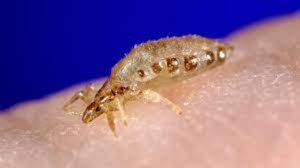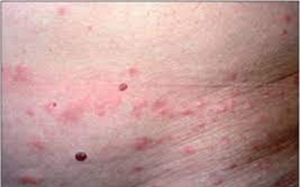Please click the frequently asked questions below for further information and IPC precautions required:
What is Body Lice?
Body lice (Pediculus humanus humanus or sometimes called Pediculus humanus corporis) are a type of tiny parasite. Infestations of body lice are known as Pediculosis corporis, Pediculosis vestimenti or Vagabond’s disease.
The lice lay eggs in the seams of clothing, usually only moving onto skin to feed on blood via biting. Infestations with body lice can cause severe itching on the parts of the body affected and sometimes a rash caused by an allergic reaction to the bites can occur.
Body lice are less common than head and pubic lice infestations, usually only occurring in vulnerable groups such as people who are homeless.
Patients should be considered contagious while live lice are present in clothing, bedding or towels.

How does it spread?
Prolonged direct contact with infested individuals or their clothing/bed linens is required for transmission. Outbreaks can occur in situations that prevent the regular laundering of clothing or maintenance of good hygiene. However, unlike head and pubic lice, infestations with body lice can lead to more serious conditions as the lice can be a vector for diseases such as typhus, trench fever, louse-borne relapsing fever.
Lice hatch from eggs (‘nits’) 1 to 2 weeks after being laid.
What are the symptoms of Body lice?
Infestations with body lice can cause severe itching on the parts of the body affected and sometimes a rash caused by an allergic reaction to the bites can occur.

Why is this important?
If NIAS staff are aware that the patient has a suspected or confirmed case this should be communicated to the Control Room (Emergency or Non-emergency as appropriate) and the staff in the receiving unit when transferring the patient to ensure effective patient care and management.
IPC Precautions
- Contact Precautions should be used.
- Hand Hygiene should be completed as per the 5 moments in line with usual practice.
- Eye protection should always be risk assessed and used with any patient where there is a risk of splashes including spitting and productive coughing.
- Gloves and Aprons should be worn.
- Long sleeved gowns / Coveralls should be considered if prolonged skin to skin contact.
- The patient should be transported via ambulance with no other patients present. Individual cases can be discussed with the IPC team and a risk assessment can be made.
- Laundry should be treated as contaminated, placed into an alginate bag and placed into a red laundry bag.
What cleaning is required?
All equipment and the ambulance should have an in-between patient clean paying particular attention to touch points.
Do staff need prophylaxis or follow up?
No staff follow up required.
The IPC team can be contacted for further advice. The team will be able to help staff risk assess the patient and precautions required and to provide support where required.
